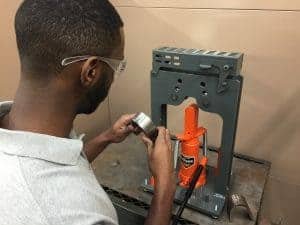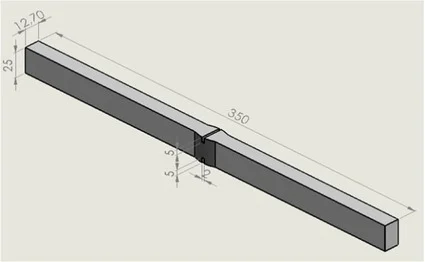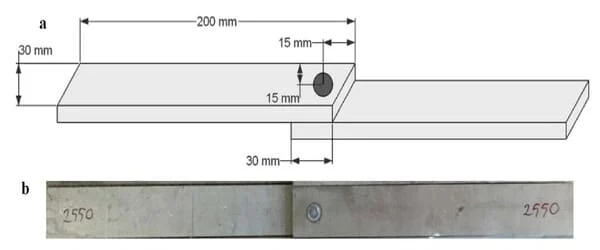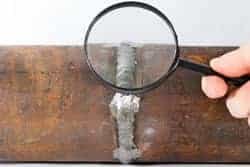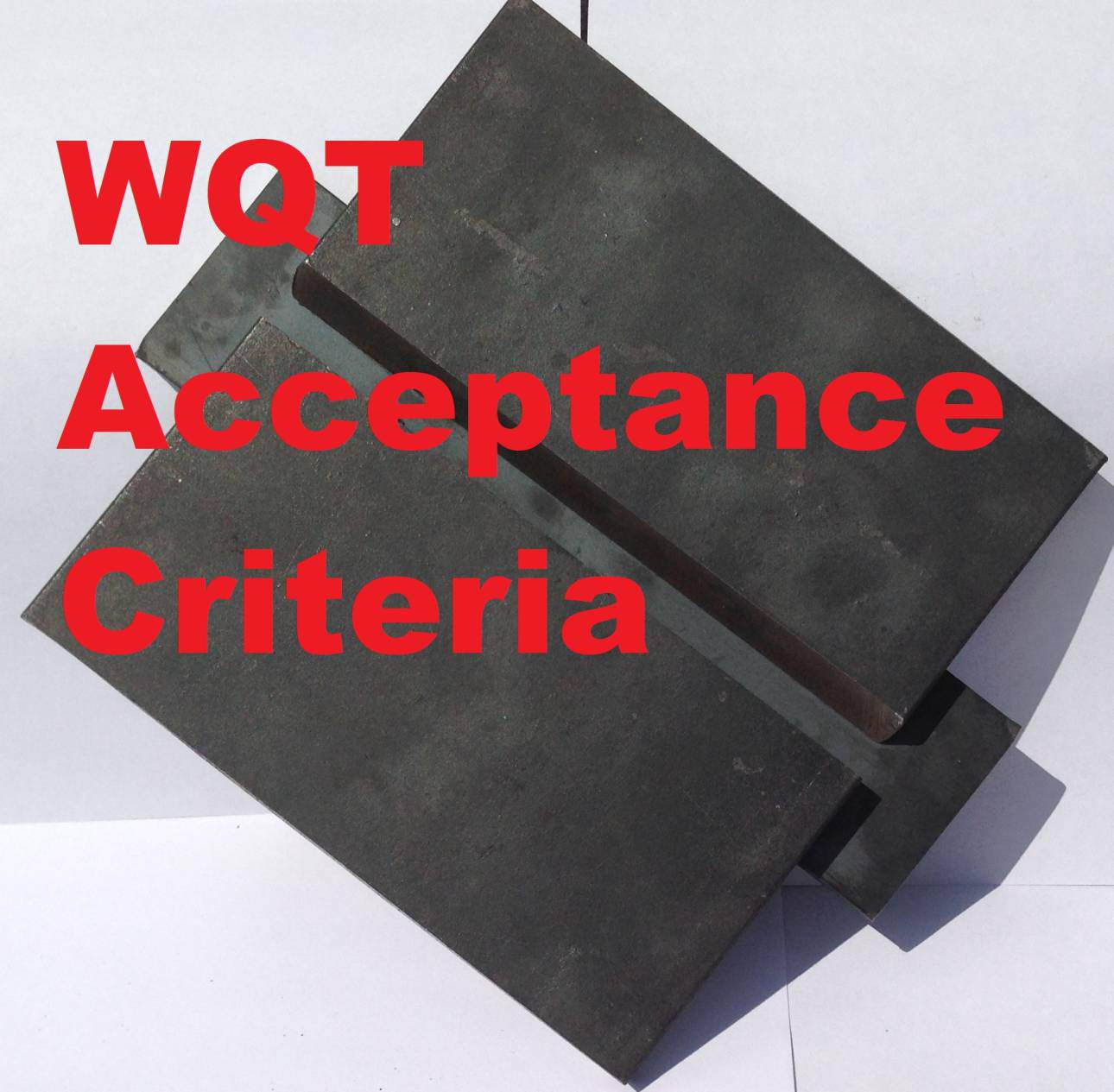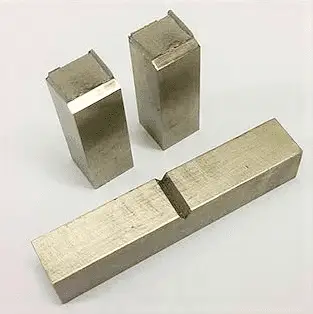Bend testing
Bend testing is a destructive test that is used to determine the strength and ductility of materials. The test involves bending a specimen until it fractures. The results of the bend test can be used to predict the behavior of the material under various conditions, such as in tension or compression.
Bend tests are commonly performed on metals, plastics, and composites. The most common type of bend test is the three-point bend test, which is used to measure the flexural strength of materials.
In this test, two supports are placed on either side of the specimen, and a force is applied to the middle of the specimen. The amount of force required to break the specimen is recorded.
The results of bend testing can be affected by many factors, including the type of material being tested, the thickness of the specimen, and the radius of curvature.
Types of bend test
There are four main types of bend test- side, face, root, and transverse. Each type of bend test is used to determine the strength of a material in a different way.
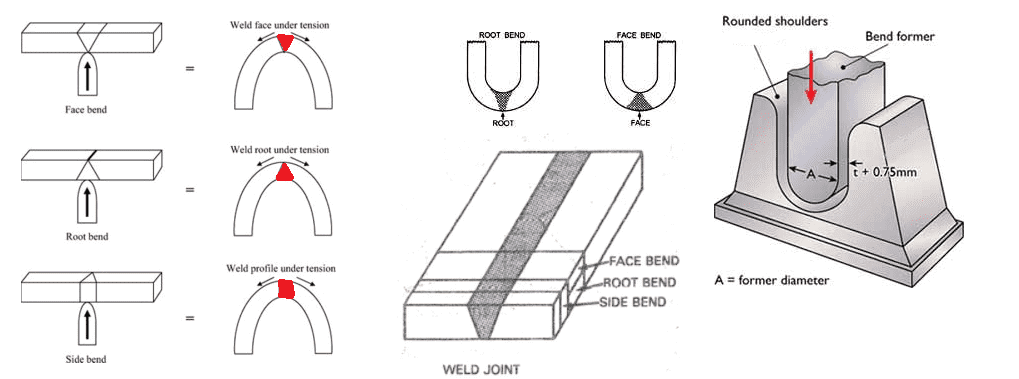
In ASME Section IX, bend test types are given in clause QW-160: Guided bend tests. As per ASME Section IX, the Types of bend tests are:
- Transverse Bend Test
- Longitudinal bend Test
Transverse bend tests are having further types of bend tests as:
- Transverse Side Bend.
- Transverse Face Bend.
- Transverse Root Bend.
- Subsize Transverse Face and Root Bends.
Similarly, the Longitudinal bend test also has the following two types:
- Longitudinal Face Bend.
- Longitudinal Root Bend.
All the above tests are specified in Clause QW-160 of ASME Section IX.
Transverse bend test
A transverse bend test is a type of mechanical testing where a specimen is cut transverse to the weld direction.
The test is performed to determine the ductility of the weld and to check for any cracks that may have formed in the weld.
Transverse bend test types are:
- Transverse Side Bend.
- Transverse Face Bend.
- Transverse Root Bend.
- Subsize Transverse Face and Root Bends.
Longitudinal bend test
A longitudinal bend test is a test in which a specimen is cut parallel to the longitudinal axis of the weld.
There are two types of longitudinal bend tests: face and root. Each type of test has its own set of requirements as specified in ASME Section IX.
Face bend tests are performed on the face of the weld, while root bend tests are performed on the root of the weld. ASME Section IX specifies the requirements for these tests.
Side bend test
The transverse side bend test is a destructive testing method used to determine the soundness of a weld.
The test is performed by loading a specimen from the side, with one side becoming convex. The dimensions of the bend test specimen are given in ASME Section 9 QW-462.2.
This test is used to evaluate the quality of a welding job by determining the soundness of the welds.
It is generally accepted that if a weld can withstand this type of testing without cracking or breaking, then it is likely to be a good-quality weld.
Root bend test
The transverse root bend test is a welding qualification test in which the weld is transverse to the longitudinal axis of the coupon.
The specimen is loaded from the face side and the root side becomes convex. Any defect present inside or on test specimen surface will open up during loading and can be found visually.
The dimensions for root bend test are given in ASME Section 9 QW-462.3 (a) is used to determine if the weld meets the requirements for this test.
Face bend test
The transverse face bend test is a specimen loaded from the weld root side so that the weld face side become convex.
The dimensions for face bend test are given in ASME Section 9 QW-462.3(a) is the weld soundness.
When performing this test, it is important to make sure that the weld is transverse to the longitudinal axis of the coupon.
This will ensure that the results are accurate and that the weld is sound. This test is used to determine the soundness & ductility of a weld.
Longitudinal bend test
The longitudinal bend test, as permitted in ASME section IX, can be used in place of the side bend test as given in Clause QW-161.5. There are two types of longitudinal tests: face and root longitudinal bend tests.
In a face longitudinal test, the weld is parallel to the longitudinal axis of the coupon. The specimen is loaded from the root side of the weld so that the face side can become convex. Any discontinuities present on the face side of the weld will reveal in this test.
In a Root longitudinal test, the weld is parallel to the longitudinal axis of the coupon. The specimen is loaded from the Face side of the weld so that the Root side can become convex. Any discontinuities present on the root side of the weld will reveal in this test.
Guided bend test
A guided bend test is a test used to determine the ductility of a material. The test is performed by bending a specimen in a three-point setup with two loading points and one support point.
The distance between the loading points is greater than the diameter of the specimen. The specimen is then loaded until failure.
The results of the guided bend test can be used to determine the quality of the material and how it will perform in applications where it will be subject to bending stresses.
The test can also be used to compare different materials or different heat treatments of the same material.
Transverse vs longitudinal bend test
There are two ways to test the soundness & ductility of a weld or material: transverse and longitudinal.
In a transverse test, the material is bent along its length. In a longitudinal test, the material is bent along its width.
The results of these tests can be used to compare the soundness of different directions of a welding test coupon or materials.
| Characteristics | Transverse bend test | Longitudinal bend test |
|---|---|---|
| Material type | For dissimilar materials welding |
For similar materials welding |
| Weld direction | Transverse to weld axis | Parallel to weld axis |
| Applications | Mainly for groove weld PQR qualification | For weld overlay PQR qualification |
| Types | Face, root and side |
Face & root |
| Material properties factor | Used for dissimilar material properties | Used for similar materials welding |
